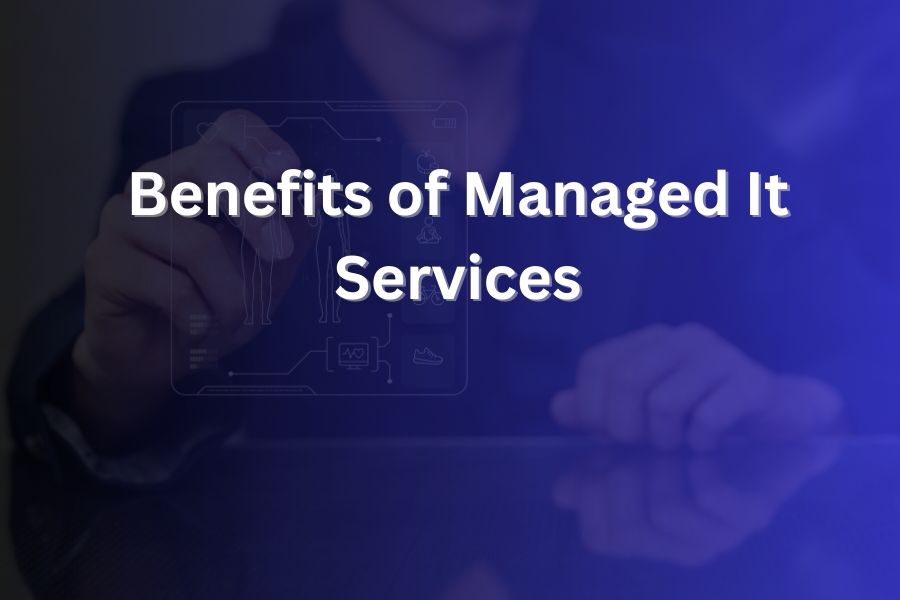When you choose managed IT services for your business, you gain more than just external support. You tap into expert resources, predictable costs, and proactive oversight that keep your technology running smoothly.
You reduce risks, unlock efficiency and focus more on your core goals. In this article you will learn what managed IT services are, the key benefits they offer, how they help U.S.-based companies stay competitive, and how to evaluate a provider.
What “Managed IT Services” Means for You
Managed IT services refer to outsourcing the management and maintenance of your technology environment to a third-party provider. That includes infrastructure, networks, cloud services, cybersecurity and help desk support.
Instead of handling every task in-house you delegate to a partner who acts as your IT operations team. This model allows you to shift from reactive trouble fixing to proactive service management.
Benefit 1: Predictable and Lower IT Costs
When you work with a managed services provider (MSP), you usually pay a fixed monthly fee for a defined range of services. You avoid the high upfront cost of hiring, training and retaining a large internal IT staff. Budgeting becomes simpler.
According to industry reports, outsourcing IT operations can reduce costs by up to approximately 30 percent. You also avoid surprise expenses from downtime, data breaches or unplanned hardware failure.
Benefit 2: Access to a Team of Specialists and Skills
Your business relies on a wide-range of technology disciplines: cybersecurity, cloud architecture, endpoints, disaster recovery, compliance, networking and more. It is expensive and difficult to hire full teams of experts for each area.
With managed IT services you gain access to certified professionals with deep experience across domains. You tap into knowledge you may not be able to afford internally. This means your IT strategy is stronger, your security posture is higher, and your technology foundation is more reliable.
Benefit 3: Proactive Monitoring, Maintenance and Faster Response
Managed IT services shift your IT support from a reactive to a proactive stance. Your provider monitors systems 24/7, identifies issues before they become failures and applies maintenance to prevent disruptions. This brings faster response times, fewer interruptions and higher uptime. In turn, your employees spend less time dealing with tech headaches and more time delivering value.
Benefit 4: Enhanced Cybersecurity and Compliance
Cyber threats keep growing in sophistication and frequency. A managed IT provider brings the tools and expertise necessary to secure your business. That includes threat detection, patching, endpoint protection, secure backups and response planning.
For U.S. companies especially, regulatory issues like HIPAA, PCI DSS or SOX may apply. A competent managed IT services partner helps you maintain compliance and reduce exposure to fines or reputational damage.
Benefit 5: Scalability and Flexibility to Match Business Growth
Your business is not static. You may grow quickly, scale down, adopt new technologies, or expand into new markets. With managed IT services you can adjust your service levels and resources accordingly. Because you work with a provider who supports flexible models, you can scale up or down without the major investment of in-house infrastructure. You remain agile and responsive.
Benefit 6: Focus on Your Core Business Objectives
Technology is important, but it may not be your business’s primary focus. When you outsource IT operations, you free up internal resources and management energy. Your team can focus on strategic initiatives: product innovation, customer experience, marketing, growth. You stop being bogged down with servers, patches, help-desk tickets. That shift leads to improved business performance.
Benefit 7: Improved Reliability, Productivity and User Experience
With stable IT systems, fewer interruptions and faster support you increase workforce productivity. Employees waste less time waiting for systems to recover.
You reduce frustration, mistakes and delays. The result: your organization operates more smoothly and effectively. Some providers cite productivity gains of 30 percent or more after adopting managed IT services.
Benefit 8: Single Point of Contact and Simplified Vendor Management
Managing multiple vendors, service contracts and technologies can be complex. A managed IT services provider becomes your single point of contact for all things IT.
They coordinate hardware, software, cloud services and third-party vendors so you don’t have to. That simplifies procurement, support escalation and accountability. You spend less time juggling relationships and more time running your business.
Benefit 9: Access to Latest Technology and Best Practices
Technology advances rapidly. New tools for cloud computing, automation, collaboration and security appear frequently. An MSP stays current and often invests in tools and processes that you might struggle to adopt internally. By partnering with a provider, you benefit from up-to-date technology and best practices without the burden of researching, implementing and maintaining these yourself.
Benefit 10: Business Continuity and Disaster Recovery Assurance
When a disaster strikes—whether hardware failure, cyber attack or natural event—your business must recover fast. Managed IT services include disaster recovery and business continuity planning. Your provider backs up critical data, tests recovery systems, and ensures you can resume operations quickly. That reduces revenue loss, reputation damage and operational disruption.
Benefit 11: Measurable Service Delivery and Performance Metrics
With an MSP, you enter into a service-level agreement (SLA) that defines what to expect: uptime, response times, resolution times, reporting.
You receive measurable metrics and dashboards that show your IT performance. That transparency gives you confidence, helps you make informed decisions and ensures the provider meets commitments.
Benefit 12: Competitive Advantage and Strategic IT Role
In today’s market, leveraging technology effectively offers a real competitive edge. By adopting managed IT services you shift IT from being a cost center to being a strategic enabler.
You can launch new services faster, adopt new business models, support remote workers, enable collaboration, and respond quickly to market changes. This empowers you to compete more effectively in the U.S. business context.
How to Choose the Right Managed IT Services Provider
Selecting the right partner matters. Here are key criteria to consider:
- Define your business objectives and what you expect from the provider.
• Review the provider’s expertise and industry experience.
• Check SLAs, support models (24/7/365 vs business hours) and escalation processes.
• Ask about cybersecurity measures, compliance credentials and data-center standards.
• Ensure they offer scalability so you can grow or shift as your business changes.
• Get clarity on cost structure: what’s included, what’s extra, what happens if you scale.
• Ask for customer references, case studies and measurable results.
• Evaluate vendor-management capability: how they handle multiple suppliers and technologies.
• Confirm transparency: dashboards, reports, KPIs and review meetings.
• Make sure there is a good culture fit and communication style aligned with your team.
Conclusion
Embracing managed IT services gives you a strategic advantage in today’s fast-moving digital environment. You benefit from predictable costs, high-level expertise, proactive monitoring, stronger security and improved efficiency.
You gain flexibility and allow your business to focus on what really matters. When you choose the right provider and align IT with your goals, you transform technology from a burden into a driver of growth.







